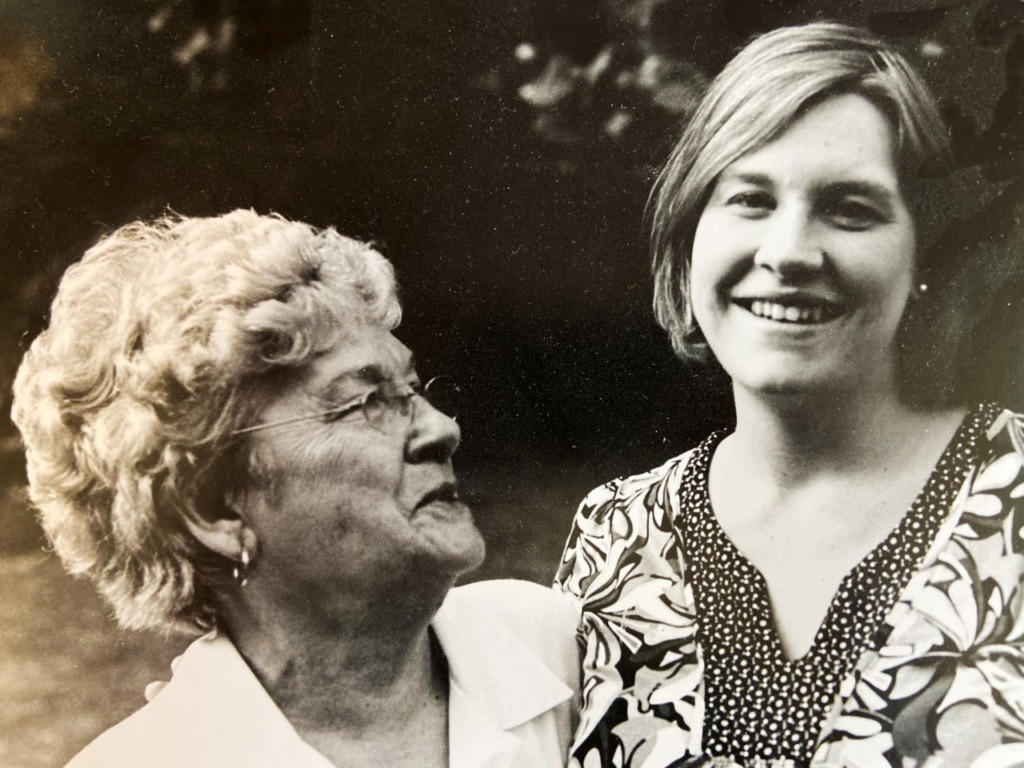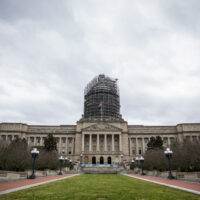While their friends are cannonballing into the city pool this weekend, my sons will spend the day in an Eastern Kentucky cemetery, placing flowers on the graves of relatives they never knew.
We are going back home on Decoration Day — a folk tradition practiced by generations of Appalachians and Southerners dedicated to visiting cemeteries where their families are buried to clean and decorate their graves, and often to attend a religious service and dinner on the cemetery grounds.

Like most who grew up in Eastern Kentucky, I’ve been practicing various rites of Decoration Day all my life. I loved the reunions, playing with my cousins, and filling plates of food and desserts. Although, I admit: I have often seen the other parts of Decoration Day as an unnecessary effort, one I had little interest in carrying on. What good was there in spending money on artificial flowers for people who would never know you made the gesture?
Yet this year, something changed. Perhaps it was turning 40, or the reckoning of the pandemic, or both, that made Decoration Day seem urgent and important not only to observe, but to pass down to my children.
As my perspective changed, my interest grew and sent me seeking answers, both historical and personal, about the cultural tradition, its origins, and why I felt a sudden urge to drag my three children to a cemetery on their first week of summer vacation.
What is Decoration Day?
In Ohio, the streets of my small town are lined with tiny American flags. Living near a military base, with many active-duty and retired U.S. Air Force neighbors, I am keenly aware of the reverence paid to Memorial Day. Each year, I’d find myself asking my friends, “We always called it Decoration Day. We decorated everyone’s graves. Did you?” The answer was, with rare exception, no. Secretly, I worried if somehow I had incorrectly celebrated a patriotic holiday. Was this the same as not knowing I needed to light a flag at night or take it down in the rain? Did we get this wrong? Had we expanded it selfishly to include everyone when we should have been only honoring those who died in battle?
For insight, I turned to the book Decoration Day in the Mountains, by folklorist Alan Jabbour, founding director of the American Folklife Center at the Library of Congress.
Jabbour’s thorough exploration of Decoration Day relieved me of my concerns and filled me with a new appreciation for history and rituals.
Decoration Day, Jabbour wrote, actually inspired Memorial Day, pre-dating any post-Civil War celebration in the South or North. Before the war, Appalachians and Southerners were already practicing what they called Decoration Day, also called “a decoration,” which involved an annual “cleaning of community cemeteries, decorating them with flowers, and holding a religious service in the cemetery, often with “dinner on the ground.” Families spent weeks leading up to Decorating Day making buds and petals from bright crepe paper, cleaning the cemeteries.
His research also softened my other silent concern that Decoration Day was tied up in celebrating the Confederacy. Jabbour explains that two early and unrelated celebrations of the Confederate dead — one in Charleston, South Carolina, and the other in Petersburg, Virginia — both using the word decoration and both using flowers, lead Jabbour to the conclude that organizers of the events each drew upon an existing tradition.
After reading Jabbour’s book, I called my grandmother, with whom I had tagged along to the cemetery, reunions, and flower-buying expeditions. It was she who had carried the duty of Decoration Day to me, and I wanted to know why.
“I was kindly like your youngins”
One question from me about Decoration Day transports my grandmother back to her childhood — and ties me to the generations that came before me.
“Can you tell me what you remember about Decoration Day?”
From the old days?
“Yes.”
It used to be a big day for people. When I was a little girl, my grandma would start in her spare time … and make crepe paper flowers. She usually made them out of bright red and turquoise and bright pink and white crepe paper. They would make a bud, and cut out petals, and take a knife to the petal and scrape the end of it to make it lay down and curl. They would have their wire, and put that bud on the end of the wire, and start with the little petals and tie them on.
It was about two-and-a-half miles to that cemetery. Grandpa would always walk, and grandma would be on the horse. She would have a basket full of fried chicken, maybe fried pies, and cake, just food like that. And me, I was always running. We cut through the hills instead of going on the main road … we’d come down so far out of that hollow and then cut through the hill. When you go through the hills there’s wild honeysuckle, the prettiest orange, and as you go up through there, there are pine trees … and it smells like pine all the way through there. It was where grandma’s babies were buried, ones who died when they were born, and her son who died when he was 21.
They’d sing, decorate graves, and talk, a lot of them hadn’t seen each other in a month or a few weeks.
They had a preacher; he always, at least to me, preached too long. I would get so hot and tired that I just wanted to hurry up and get gone. …
I’ll be honest with you, I was kindly like your youngins, I never was still. As far as standing around and watching what everybody did, I just sure didn’t. But I do remember decorating the graves. I think it’s important to decorate.

Hearing her stories made it clear: Decoration Day, for me, was the remembering, linking myself and my children to the generations before us.
As I grow older, and as a pandemic has brought the fragility of life into clear focus, I’m buoyed by the remembering, by the traditions that connect the present, future, and past. To quote Alan Jabbour, “At the deepest spiritual level, a decoration is an act of respect for the dead that reaffirms one’s bonds with those who have gone before.”
And so today, my children will carry the flowers over the hillside to the graves of their great-grandfather, great-great grandparents and other relatives.
We’ll make sure to place a small bouquet on the stone of my grandfather’s little brother, who died as an infant.
They’ll listen to our stories as we walk around the cemetery, and I hope, feel connected to the people who came before them.
They will get hot, tired, and bored.
Like their great-grandmother 80 years before them, they will want us to hurry up and get gone.
But someday, maybe they will want to come back.
Tracy Staley is a writer and communications professional in Dayton, Ohio, by way of Hazard, Kentucky. She clings to her roots through writing, reading, and music and spends her days as a digital marketer at a Lexington, Ky.-based marketing agency. She also writes for the Rural Assembly. You can reach her at tracy@greatstoriesllc.com.






